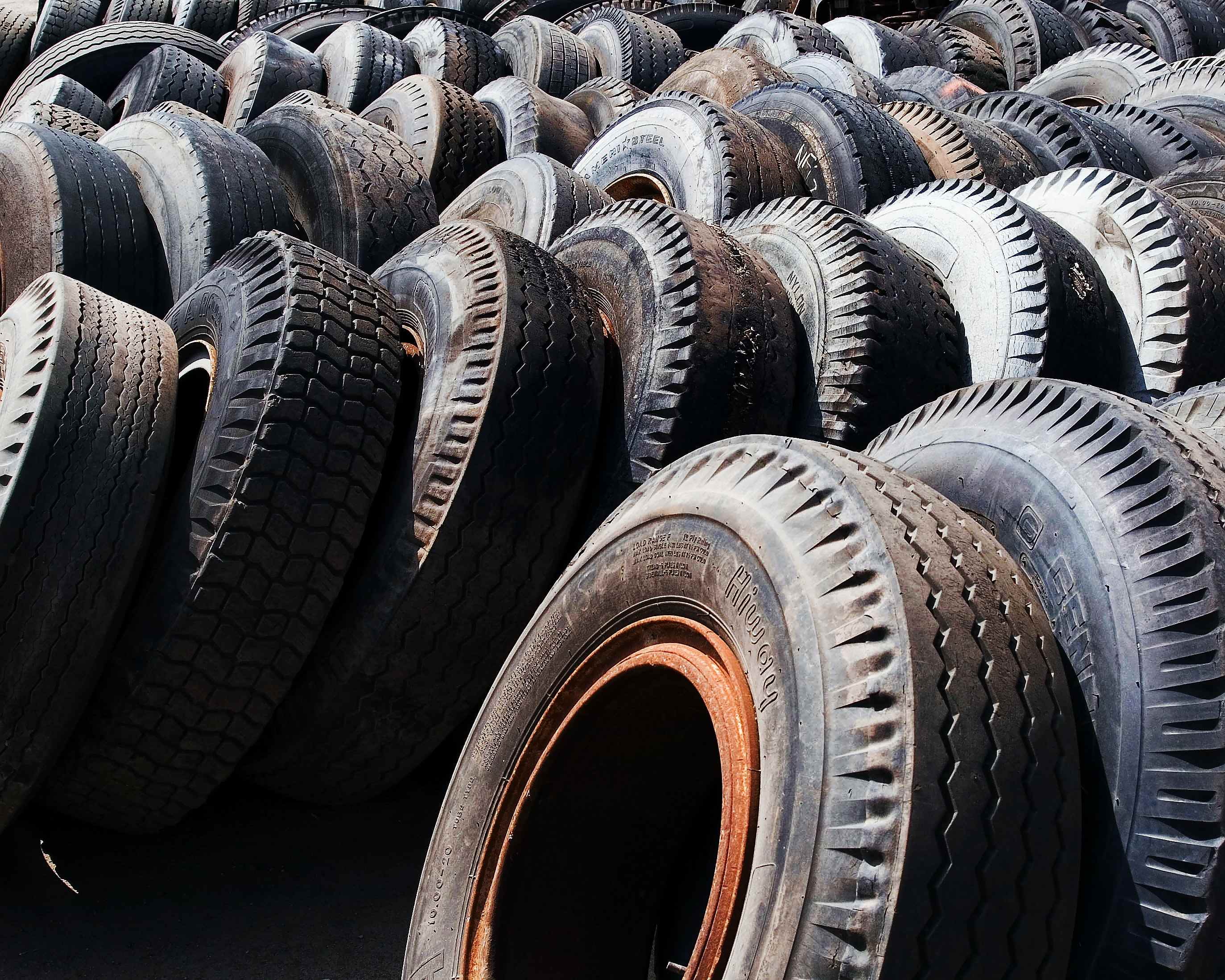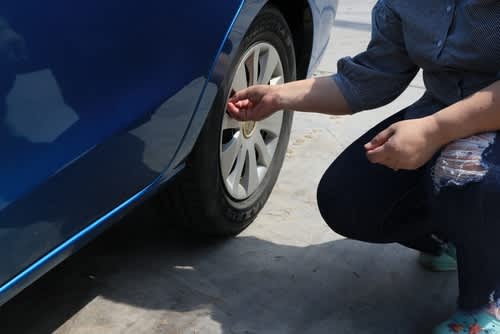Tire Maintenance & Safety
Best price guarantee
Tire replacement coverage
24/7 roadside assistance
Easy returns

Proper tire maintenance is crucial for vehicle safety and performance. Recognizing the signs that your tires need replacement can help prevent accidents and improve driving efficiency. Tires are the only point of contact between your vehicle and the road, so it's essential to ensure they're in good condition. Neglecting tire care can lead to dangerous situations and costly repairs later.
While regular inspections by a professional are recommended, there are several warning signs you can look out for that indicate it might be time for new tires. Knowing these signs can help you make informed decisions about when to replace your tires and keep you safe on the road.
What is a Worn Out Tire?
Tires are considered worn out when they reach a tread depth of 2/32"—the legal minimum in most states. Continuing to drive on tires below this tread depth is unsafe and can lead to hydroplaning, longer stopping distances, and blowouts.
Several factors influence when to get new tires, including:
- Mileage: Most tires are designed to last between 25,000 to 50,000 miles, depending on the type of tire, driving habits, and road conditions.
- Age: Even if a tire appears to have sufficient tread, vehicle manufacturers generally recommend replacing tires that are more than six years old due to rubber compound degradation.
- Signs of damage or uneven wear: Careful inspection of your tires can reveal physical damage or uneven wear patterns that indicate a need for replacement.
Understanding these factors is crucial for determining when your tires have reached the end of their lifespan. Don't wait until your tires are completely bald or showing severe signs of wear to replace them—by then, it may be too late to ensure your safety on the road. Regularly monitoring your tire condition and being proactive about replacement can help you avoid dangerous situations and get the most out of your investment in quality tires.
Inadequate Tread Depth
Ensuring your tires have adequate tread depth is vital for maintaining control and safety on the road. Tread depth plays a critical role in channeling water away from the tire's contact patch, which helps maintain traction in wet conditions. A shallow tread can cause the tire to skid across the water's surface, significantly increasing the likelihood of losing control (also known as hydroplaning).
A simple and effective method to check your tire tread depth is the penny test. Insert a penny into the tread grooves with Lincoln's head facing down. If you can see the top of his head, it's time to replace the tires. This test provides a quick visual cue, but for a more precise measurement, using a tread depth gauge is advisable. Driving on tires with insufficient tread depth can be hazardous, particularly when the road is wet or slippery.
Regularly checking your tires with these methods can help you stay ahead of potential issues. Consistent monitoring ensures your vehicle maintains optimal traction, reducing the likelihood of accidents due to tire failure. Keeping an eye on tread depth, along with other tire maintenance practices, supports a safer driving experience and prolongs the lifespan of your tires.
Cracks, Cuts or Bulges
Regularly examining your tires for cracks, cuts, or bulges is crucial for maintaining safety on the road. These visible defects can weaken the tire's structure, potentially leading to failure. Cracks may develop on the sidewalls due to prolonged exposure to harsh conditions, while cuts can result from sharp debris encountered during driving.
Bulges or blisters on a tire's surface signify a compromised internal structure where air has penetrated the outer layer. This typically occurs after hitting potholes or curbs, which can stress the tire and create weak spots. Such damage increases the likelihood of a sudden blowout, especially at higher speeds.
Consistent inspections for these types of damage can prevent unexpected tire issues. Should you notice any of these signs, it's vital to consult with a professional for a detailed assessment. Detecting and resolving cracked tires early enhances your vehicle's reliability and safety on the road.
Excessive Vibration
When you notice unusual vibrations while driving, it often points to a problem with the tires that needs addressing. This vibration, which tends to intensify at higher speeds, can be felt through the steering wheel, floorboard, or seat. Ignoring these signals can lead to further complications, making it crucial to investigate the cause promptly.
A possible culprit for vibrations is a misalignment or imbalance in the tires. Tires that are not balanced correctly can cause the vehicle to shake, affecting both comfort and control. Fixing this issue typically involves rebalancing the tires, which can often resolve the vibration.
However, if rebalancing does not eliminate the vibration, it may indicate more serious internal damage, such as separated belts or compromised tire integrity. In this scenario, a professional assessment is vital to determine the next steps, including the potential need for tire replacement to ensure safe and stable driving conditions.
Tire Age
The passage of time affects the safety and performance of your tires. As they age, the materials in the tires change due to environmental factors like UV exposure and fluctuating temperatures. These changes can lead to a decline in the tire's structural soundness, impacting its overall reliability on the road.
It's generally recommended to replace tires after they reach a certain age, often around six years, to prevent potential issues. This guideline exists because older tires can become brittle and more prone to developing cracks or other defects, which may not be immediately visible. Regular inspections are crucial for identifying these age-related weaknesses before they compromise your safety.
To monitor tire age, look for the date of manufacture imprinted on the tire's sidewall. This date indicates when the tire was produced, helping you track how long it's been in service. Staying aware of your tires' age and condition ensures you maintain safe driving conditions and avoid unexpected tire failures.
How to Check Your Tires

Consistent tire assessments are key to ensuring your vehicle's roadworthiness and performance. Aim to examine your tires at regular intervals, ideally monthly, and certainly before setting off on extended trips. During these evaluations, focus on identifying any subtle signs of wear or irregularities in the tread pattern, which might indicate misalignment or other issues.
Maintaining optimal air pressure is fundamental to tire health. For precise readings, use a digital tire pressure gauge to verify that each tire is inflated to the manufacturer's recommended level. Properly inflated tires enhance handling and fuel efficiency, reducing the risk of premature wear and potential blowouts.
In addition to visual and pressure checks, ensure your tires have adequate tread remaining. Employ a tread depth gauge for an accurate measurement, confirming that your tires provide sufficient grip, especially during adverse weather. If any concerns arise during these checks, consult with a professional to evaluate the need for tire replacement, helping to maintain a safe driving environment.
Staying vigilant about the condition of your tires is essential for maintaining a safe and reliable vehicle. By regularly checking for these five warning signs, you can proactively address any issues and ensure your tires are always in top shape. When it's time to replace your tires, shop for tires online with us and find the best deals to keep you rolling with confidence.
Ready to find the perfect tires?
Search By
